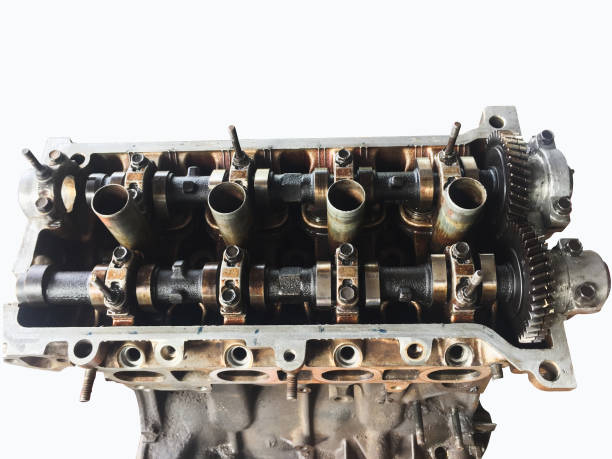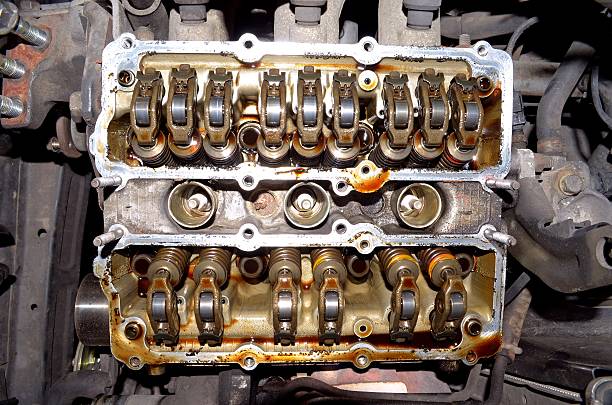
When it comes to the performance of a car’s engine, one of the most critical factors to consider is its valvetrain layout. Single Overhead Camshaft (SOHC) and Double Overhead Camshaft (DOHC) are two common configurations in modern engines. Both have their advantages and disadvantages, affecting performance, fuel efficiency, and overall engine dynamics. This article will discuss the key differences between SOHC and DOHC, highlighting their respective pros and cons to help you better understand which engine layout offers better performance.
What is an Overhead Camshaft?
The Role of the Camshaft
A camshaft is a crucial component in an internal combustion engine that controls the opening and closing of the intake and exhaust valves. These valves let air and fuel into the combustion chamber and allow exhaust gases to exit. The timing of these actions is critical for the engine’s performance, fuel efficiency, and emissions.
Overhead Camshaft Configuration
In an overhead camshaft configuration, the camshaft is located in the cylinder head above the combustion chamber. The overhead camshaft design reduces the number of moving parts and simplifies the valvetrain, resulting in a more efficient and compact engine. There are two main types of overhead camshaft configurations: single overhead camshaft (SOHC) and double overhead camshaft (DOHC).
Single Overhead Camshaft (SOHC)

Basic Functioning of SOHC
In a SOHC engine, there is one camshaft per cylinder bank that controls both the intake and exhaust valves. The camshaft is connected to the valves via rocker arms or directly through bucket tappets, depending on the engine’s design. The SOHC layout is simpler and more compact than a DOHC configuration, making it more cost-effective and easier to maintain.
Advantages of SOHC
SOHC engines tend to be less complex and more affordable than their DOHC counterparts. Their simpler design means fewer components, which can result in reduced manufacturing costs and lower maintenance expenses. SOHC engines are also typically lighter and more compact than DOHC engines, making them suitable for smaller vehicles or applications where space is a constraint.
Double Overhead Camshaft (DOHC)

Basic Functioning of DOHC
A DOHC engine features two camshafts per cylinder bank – one for the intake valves and another for the exhaust valves. This configuration allows for more precise control over valve timing and can improve overall engine performance. DOHC engines often use multiple valves per cylinder (usually four, but sometimes more), further enhancing airflow and combustion efficiency.
Advantages of DOHC
DOHC engines generally offer better performance and higher engine speeds than SOHC engines. The separate camshafts for intake and exhaust valves allow for greater flexibility in valve timing and improved engine breathing. Additionally, DOHC engines can benefit from variable valve timing technologies that can optimize performance, fuel efficiency, and emissions across a wide range of engine speeds.
Comparing SOHC and DOHC: Which One Revs Up Performance?
Performance
DOHC engines typically have a performance advantage over SOHC engines, particularly at higher engine speeds. The improved valve control and increased number of valves per cylinder can result in better airflow, higher horsepower, and torque. However, SOHC engines may offer comparable performance in low-speed and low-load driving conditions, where their simpler design and lighter weight can be beneficial.
Fuel Efficiency
Both SOHC and DOHC engines can offer good fuel efficiency, depending on the specific engine design and application. DOHC engines can benefit from more precise valve control and better engine breathing, potentially improving fuel efficiency at high engine loads and speeds. However, SOHC engines may have a slight edge in low-load, city driving conditions due to their simpler and lighter design.
Cost and Maintenance
SOHC engines tend to be more cost-effective and easier to maintain than DOHC engines. The simpler design translates into fewer components, which can reduce the initial purchase price and potential repair costs. However, the complexity of DOHC engines can offer better performance and efficiency, which may offset their higher cost for some drivers.
Noise, Vibration, and Harshness (NVH)
In general, DOHC engines may produce less noise and vibration than SOHC engines due to their more balanced design and better control over valve operation. However, the NVH characteristics of an engine can also be significantly influenced by other factors, such as the engine’s overall design, the vehicle’s NVH isolation measures, and the condition of the engine’s components.
Making the Choice: SOHC vs DOHC
Choosing between a SOHC and a DOHC engine depends on your specific needs and priorities. If you’re looking for a more affordable, simpler engine with easier maintenance, a SOHC design might be a better choice. However, if performance, high-speed efficiency, and precise valve control are your top priorities, a DOHC engine could be the way to go.
Conclusion
Understanding the differences between SOHC and DOHC engines can help you make an informed decision when purchasing a new vehicle or considering an engine upgrade. While both designs have their advantages, the choice between SOHC vs DOHC ultimately depends on your individual requirements and preferences. Whether you choose a vehicle with a SOHC or DOHC engine, regular maintenance and care are key to ensuring optimal performance and longevity.








